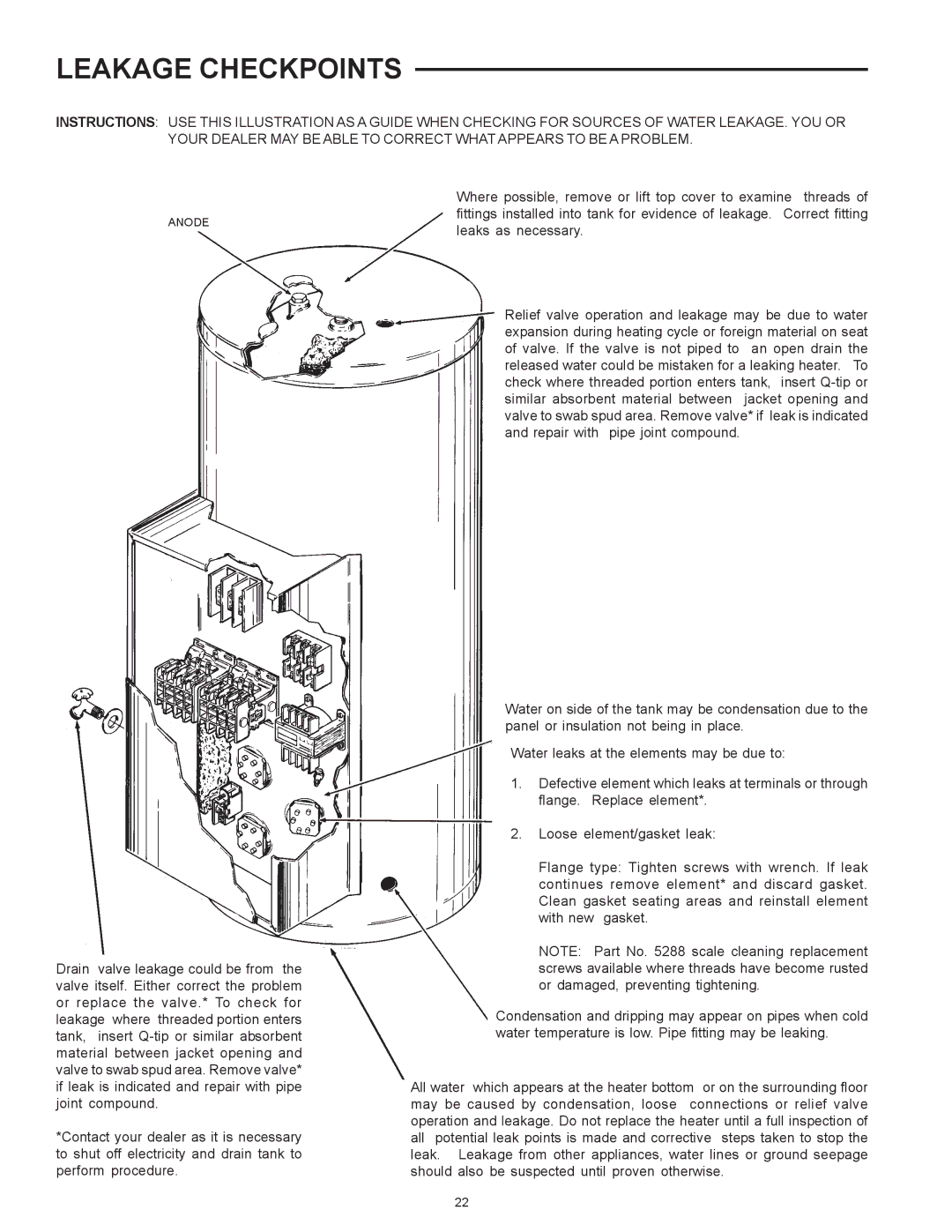SSE-120, SSE-5 specifications
State Industries has long been a trusted name in the manufacturing of water heating solutions, and their SSE series exemplifies this commitment to quality and innovation. The SSE-120 and SSE-5 models are two standout products in their lineup, catering to diverse needs in both residential and commercial applications.The SSE-120 is a remarkable electric water heater designed with efficiency and performance in mind. It boasts a substantial 120-gallon capacity, making it ideal for larger households or small businesses with significant hot water demands. This model features a robust stainless steel tank, which not only enhances its durability but also provides excellent insulation to minimize heat loss. A key technology incorporated in the SSE-120 is its advanced dual heating element system, which ensures rapid water heating and consistent temperature maintenance, catering to high volume usage without compromising performance.
On the other hand, the SSE-5 is tailored for locations where space is a premium but hot water needs are still considerable. This model has a 5-gallon capacity and is perfect for point-of-use applications, such as supplying sinks, showers, or small appliances. The SSE-5 is designed with a tank-style configuration that guarantees a steady supply of hot water whenever needed. Its compact structure makes it easy to install in various settings, including under sinks or in cramped utility rooms.
Both models utilize a high-quality, energy-efficient design that complies with modern energy standards, helping users minimize utility bills while reducing their carbon footprint. The tanks in the SSE series are insulated with high-density foam, which not only helps in energy conservation but also ensures that users receive hot water quickly and efficiently.
Another noteworthy characteristic of the SSE series is their user-friendly controls. With adjustable temperature settings, both the SSE-120 and SSE-5 allow users to customize water temperatures according to specific needs, enhancing user experience and convenience.
In conclusion, State Industries' SSE-120 and SSE-5 water heaters combine advanced technology, superior construction, and energy efficiency, making them excellent choices for anyone in need of reliable hot water solutions. Whether for home or business, these models are built to meet the diverse demands of users in today’s water heating market.

